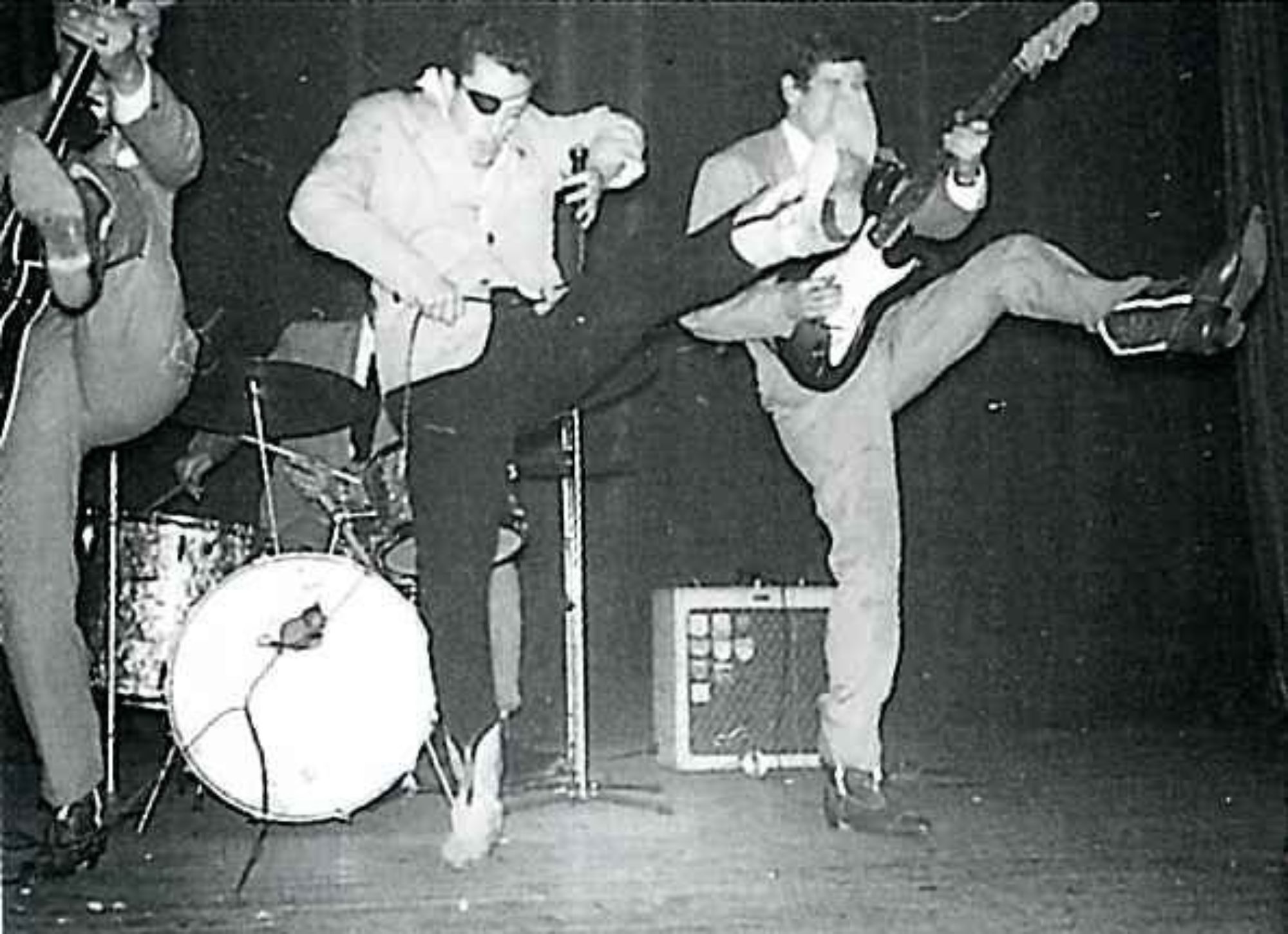100 – 91
100. Manfred Mann – Do Wah Diddy Diddy (1964)

Manfred Mann’s only entry in our top 100 despite numerous top 10 hits in the 1960’s –
1964 – “5-4-3-2-1” #5; “Do Wah Diddy Diddy” #1; “Sha La La” #3
1965 – “Come Tomorrow” #4; “If You Gotta Go, Go Now” #2
1966 – “Pretty Flamingo” #1; “Just Like a Woman” #10; “Semi-Detached Suburban Mr. James” #2
1967 – “Ha! Ha! Said The Clown” #4
1968 – “The Mighty Quinn” #1; “My Name Is Jack” #8; “Fox On The Run” #5
1969 – “Ragamuffin Man” #8
Do Wah Diddy Diddy’s top10 chart run started here – July 1964
The band were formed in London by Manfred Mann (keyboards) and (drummer) Mike Hugg. The song was originally recorded by an American group ‘The Exciters’ but it was the Manfred’s version that became famous, reaching number 1 in the UK and USA. The writers also penned ‘Da Doo Ron Ron’ and originally wrote this as ‘Do Wah Diddy’ , but the Manfred’s added an extra ‘Diddy’.
99. Ricky Nelson – Hello Mary Lou (1961)

Rick Nelson (1940-1985) was an actor, musician and singer-songwriter. He started his career in 1949 in a radio show, by 1952 he featured in films and the singles started in 1957. Between 1957-1973 he placed in the US top100 53 times. 1985 saw his comeback tour (putting ‘Y’ back in his name) but the tour was cut short when his plane crashed on new years eve.
Hello Mary Lou was written by Gene Pitney and was issued with ‘Travelin’ Man’ as the B-side. Gene recorded the song but it wasn’t released as he had another single out at the time.
Hello Mary Lou Chart run started here – June 1961
98. Peter Sarstedt- Where Do You Go To (My Lovely)? (1969)

Peter Sarstedt (1941 – 2017) was a British singer-songwriter. He was the brother of Eden Kane (this was his stage name, his real name was Richard Sarstedt) who topped the chart in 1961.
His music was generally ballads derived from traditional folk music and was best known for writing and performing this song, number 98 in our top100 songs of the 60’s.
He claimed his first wife, Anita, as the inspiration for the song, about a fictional girl named Marie-Claire who grows up on the poverty-stricken streets of Naples, becomes a member of the jet-set and goes on to live in Paris.
Peter had 1 other top10 hit – the follow-up “Frozen Orange Juice” which spent 1 week at 10th position in July the same year.
97. Ned Miller – From a Jack to a King (1963)

American country music singer Ned Miller (1926-2016) was a singer/songwriter who considered himself more of a writer due to his stage fright. He wrote and recorded ‘From a Jack to a King’ which was also covered by Elvis and Bobby Darin.
It was originally released in 1957 but had no chart success, Miller persuaded the label to re-release it five years later and the track reached number 2 in the charts, spending three weeks there.
It was the 6th most played song of 1963 and the 9th best selling (the only American in the top 10 that year) but he did not tour to promote it.
The song was upbeat. A man wins the heart of the girl of his dreams, changing his fortune for the better.
Due to his shyness on stage, he used to ask friends to perform in his name for him and eventually gave up the business in 1970.
“If you love shows and like to perform, it’s a great business, but if you don’t, you shouldn’t be in it,”
96. The Searchers – Sweets For My Sweet (1963)
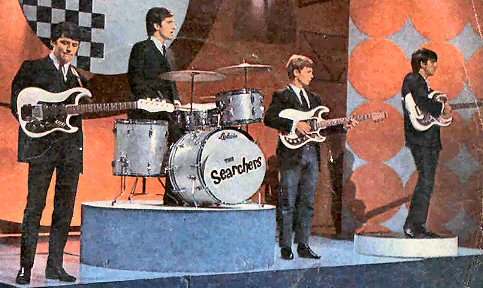
Debut from the Liverpool band, the song propelling them as equals to Gerry and the Pacemakers and behind only to the Beatles in the Merseybeat boom.
Written by the team of Mort Shuman and Doc Pomus who wrote many hit top 10 UK singles in the 60’s (Elvis’ Mess of Blues, Surrender, Little Sister & His Latest Flame; Can’t get used to losing you by Andy Williams and Save the Last Dance for Me for the Drifters. They also wrote as individuals or with others many other top 10 hits such as She’s Not You, The River, Sha La La La Lee, Love is Just a Broken Heart, Here I Go Again, Little Children)
It was originally recorded by the Drifters in 1961 which failed to chart in the UK, likewise the Searchers version failed to chart in the US although when they did with ‘Needles and Pins’ on the 7th March 64, they became the ‘equal-second’ Liverpool band to chart in America, behind the Beatles and equal with The Swinging Blue Jeans who charted with ‘The Hippy Hippy Shake’ the same week.
Mort Shuman – “Well they got the words wrong – it’s ‘your tasty kiss’ not ‘your first sweet kiss’ – but I thought it was fine”
You can follow its chart run from July 63 here.
The song spent two weeks at Number 1, they had 2 further number 1’s in 1964 ‘Needles and Pins’ & ‘Don’t Throw Your Love Away’ and also reached the the top 10 with ‘Sugar and Spice’ (Number 2, 1963), ‘When You Walk in the Room’ (Number 3, 1964) and ‘Goodbye My Love’ (Number 4, 1965)
95. The Tremeloes – Silence Is Golden (1967)

The Tremeloes (Dagenham, Essex) had come back from obscurity, having lead Brian Poole quit to pursue a solo career, they had signed to CBS records and after releasing an uncharted Beatles cover ‘Good Day Sunshine’ they reached the top 10 again in 1967 with the Cat Stevens song ‘Here Comes My Baby’. That was the break they needed and they followed it up with ‘Silence is Golden’ which was always well received live.
Len ‘Chip’ Hawkes (Bass/Vocals) –
“We were on tour with The Hollies and we were getting standing ovations for Silence Is Golden. We recorded it immediately and by the end of the tour, it was in the charts. Tony Hicks of The Hollies said to me, ‘It’s a good thing you did that as we were going to record it.”
It’s a timeless classic, a sad tale, the singer is in love with a girl who is in a relationship with a man that is cheating on her. The singer knows this and wants to tell her, but he also knows that by telling her, he would break her heart.
The single spent 3 weeks at Number one during May/June 1967.
The Tremeloes auditioned for Decca records the same time as The Beatles, the famous New Years Day 1962 audition when Dick Rowe turned the Beatles down.
Decca signed the Tremeloes and changed their name to ‘Brian Poole and the Tremeloes’ which was supposed to be the fashion at the time.
Under this name they had 4 top 10 singles – Twist and Shout (No.4) and Do You Love Me (No.1) in 1963; Candy Man (No.6) and Someone, Someone (No.2) in 1964.
When Brian Poole left, The Tremeloes had a further 6 top 10 1960’s singles –
1967
Here Comes My Baby (4)
Silence Is Golden (1) Follow its chart run here
Even the Bad Times Are Good (4)
1968
Suddenly You Love Me (6)
My Little Lady (6)
1969
(Call Me) Number One (2)
94. Tommy James and the Shondells – Mony Mony (1968)
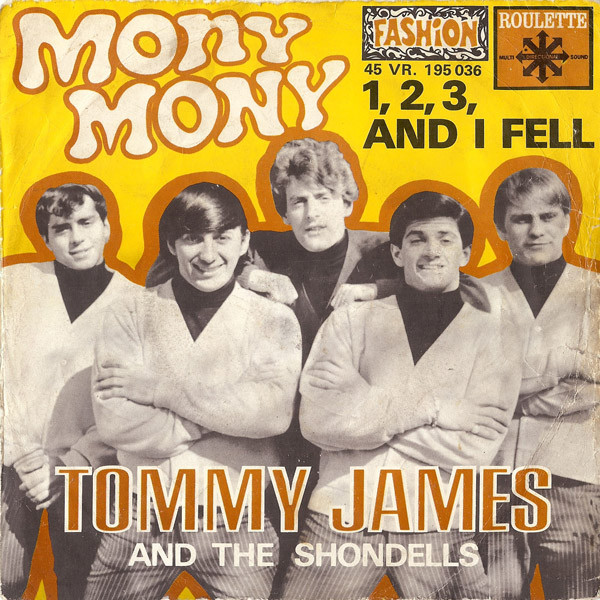
Formed in Michigan, USA as a rock band, Tommy James and the Shondells had just two hit singles, the first being ‘Hanky Panky’ which reached No.38 in 1966.
‘Mony Mony’ was written by Tommy James, Bo Gentry, Ritchie Cordell and Bobby Bloom. James and Cordell were stuck for the songs title, wanting a 2-syllable nonsense girl’s name. They were in James’ Manhattan apartment when he went to the terrace and looked out at the skyline, what he saw illuminated in red letters was the initials of the Mutual of New York building (M.O.N.Y).
The song spent three weeks at Number One (in two spells as The Crazy World of Arthur Brown’s ‘Fire’ hit the top for a week) You can follow its chart run here.
After the success of the song the band were labelled as ‘bubblegum pop’ which James hated, he changed their style to psychedelic rock and continued to have hits in the USA.
93. Engelbert Humperdinck – There Goes My Everything (1967)
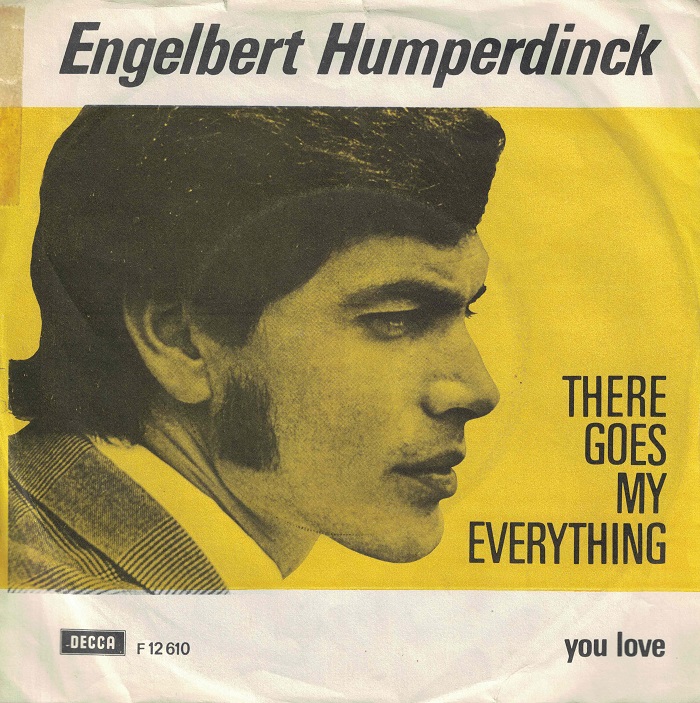
‘There Goes My Everything’ was written by American Country Musician and songwriter Dallas Frazier (b 1939) and was written about a divorce his friend, Ferlin Huskey (1925-2011, another American country singer) was going through. Frazier’s singing success was limited, but his songwriting was covered by many artists, Huskey being one of the early artists to perform his tunes.
The song is sung from the point of view that the singer is realising how much his lover means to him now that the relationship is breaking up.
The song was made famous by American Country singer Jack Greene (1930-2013) who took it to the No.1 spot for seven weeks on the US Country Music Chart in 1966. Elvis Presley would also famously cover the song.
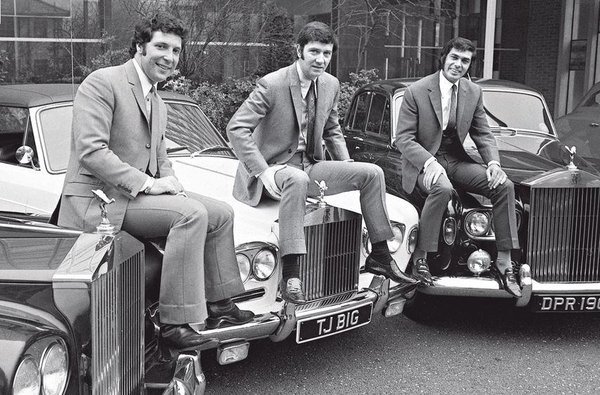
Arnold George Dorsey was born in India 2/5/1936 and had seven sisters and two brothers. He moved to Leicester aged 10 and had an interest in music early on, he originally played saxophone before moving to vocals at 17.
Playing the nightclubs as Gerry Dorsey, he struggled in the music industry until he teamed up with Gordon Mills (1935-1986) who was also born in India before moving to Wales. It was Mills who suggested Dorsey changed his name to Engelbert Humperdinck – the same name as the 19th century German composer (1854-1921) who created the opera Hansel and Gretel. Mills would also manage Tom Jones and Gilbert O’Sullivan and also write many hit singles.
Engelbert was a phenomenon, two Number 1’s and eight top ten singles in the 60’s, 140 million records sold worldwide, his female fans known as ‘Humperdinckers’ helped him score two million selling singles in the same year with ‘Release Me’ and ‘The Last Waltz’.
‘There Goes My Everything’ (Follow the chart run here) was his 2nd single and came between the two million sellers. It was kept off the top spot by Procol Harum’s ‘A Whiter Shade Of Pale’.
Engelbert will feature again in this top 100 of the 60’s list…
92. Des O’Connor – I Pretend (1968)
‘I Pretend’ was a No.1 hit in 1968 by Des O’Connor, written by Les Reed and Barry Mason.
Les Reed (born Woking, Surrey 1935-2019) wrote over 60 hits for many artists with various song writing partners. With Geoff Stephens he wrote ‘Tell Me When’ for The Applejacks, ‘There’s a Kind of a Hush’ for Herman’s Hermits, ‘Daughter of Darkness’ for Tom Jones… Elvis Presley had a No.1 in Brazil with their song ‘Sylvia’. Reed also wrote ‘It’s Not Unusual’ for Tom Jones (with Gordon Mills) and ‘Delilah’ (with Mason).
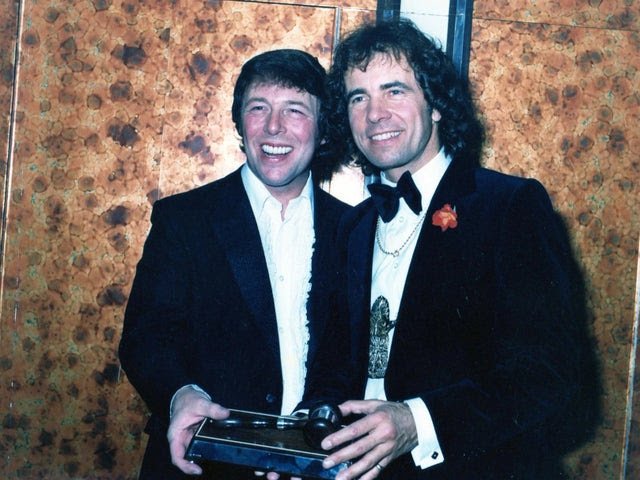
Barry Mason (born Wigan, Lancashire 1935) had his first hit with ‘Don’t Turn Around’ for The Merseybeats before teaming up with Reed. After ‘Delilah’ came ‘I’m Coming Home’ (Tom Jones), ‘The Last Waltz’ a million seller for Engelbert Humperdinck, ‘Everybody Knows’ (Dave Clark 5), ‘Kiss Me Goodbye’ (Petula Clark) and many more. They also penned ‘Marching On Together’ for Leeds United Football Team, for the 1972 FA Cup Final. He also wrote the 1970 No.1 hit ‘Love Grows (Where My Rosemary Goes)’ (with Tony Macaulay) for Edison Lighthouse. Mason has also had Elvis, Rod Stewart, Gene Pitney and many more record his songs.
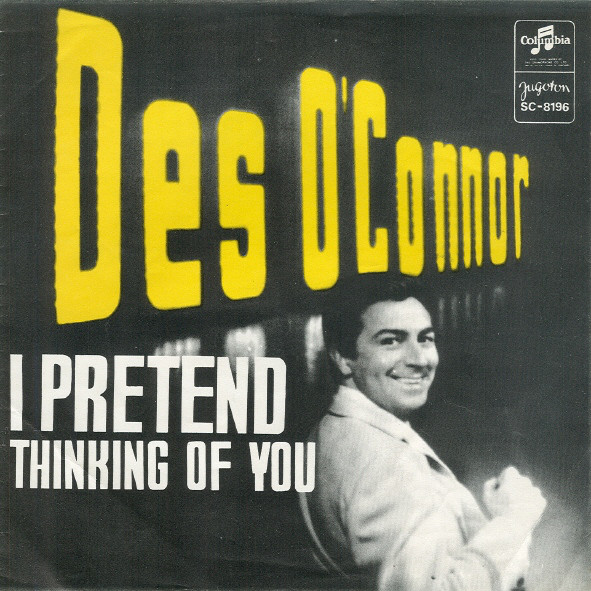
Des O’Connor (born London 1932) started show business as a Butlin’s Redcoat, he was also compere on Buddy Holly’s only UK tour before touring himself as a comedian in theatres across the UK. He did sing during his act, ‘Thin Chow Min’ was his spoof for the hit ‘Big Bad John’ which was a hit on Juke Box Jury.
Already appearing on TV, his big break came with his own show ‘Des O’Connor Show’ which ran from 1963-1973 and he’s been in TV since then – chat shows, presenter and a singer who’s recorded 36 albums. Des’ music is often the subject of bad taste and not many will admit to liking his music. However, he had 3 top 10 UK singles in the 60’s – Careless Hands (No.6, 1967), I Pretend (No.1, 1968) and, 1-2-3 O’Leary (No.4 1968).
Les Reed and Barry Mason were in Wessex studios and in walked Des O’Connor.
Les Reed – “He wanted to do a jingle and as he passed the piano he said, ‘why don’t you two guys write me a song’. So we wrote ‘I Pretend’ and he came back from the jingle and said ‘I love this’. It had taken us an hour”.
They also wrote him a second song called ‘Remember’ which went to No.1 in Australia.
91. The Everly Brothers – Temptation (1961)
Isaac Donald ‘Don’ Everly (b1937) and Phillip ‘Phil’ Jason Everly (1939-2014) were an immensely popular American duo, influenced by country music and rock n roll. Their famous close harmony singing would influence a generation of artists such as the Beatles, Beach Boys, Simon & Garfunkel and ABBA.

‘Temptation’ was a cover song, originally written by Ignacio ‘Nacio’ Herb Brown (USA, 1896-1964) and Arthur Freed (USA, 1894-1973).
Nacio wrote ‘pop’ songs, his first hit coming in 1920, and by 1928 he was hired by Hollywood to produce film scores.
Arthur Freed was a lyricist and film producer (winning two Best Picture Oscars, ‘An American in Paris’ in 1951 and ‘Gigi’ in 1958).
Most of his hit songs he co-wrote with Nacio, including the work for the 1952 film ‘Singin’ in the Rain’ which he also produced.
He became responsible for turning out MGM’s musicals between 1929-39, he supplied the lyrics and Nacio the music.
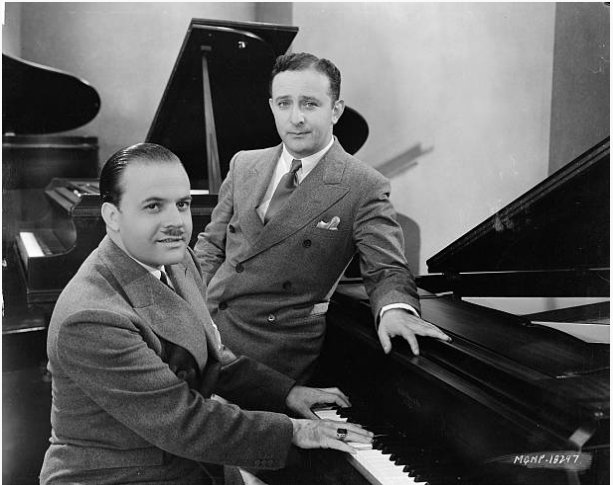
The song ‘Temptation’ was used for ‘Singin’ in the Rain’ but originally sung by by Bing Crosby in the 1933 film ‘Going Hollywood’.
The Everly Brothers would take it to Number 1 in July 1961, it would be their 4th and final chart topper.
- All I Have to do is Dream / Claudette (May 58)
- Cathy’s Clown (May 60)
- Walk Right Back / Ebony Eyes (Mar 61)
The hit came at a price, as producer Wesley Rose was unhappy at the duo choosing the song. It wasn’t published by their usual firm which meant he wouldn’t receive any royalties. He went on to block the duo from releasing any songs from regular publisher ‘Acuff-Rose’ which meant the Everly Brothers lost access to their own material, and as songwriters to the publisher, any material they may write.
At the time only Elvis Presley beat the Everly Brothers in popularity and radio play, but by the time the dispute with Rose ended, it was 1964 and the world of pop music had changed.
90. Cliff Richard – Wind Me Up (Let Me Go) (1965)
Written by Bob Montgomery (USA 1937-2014) and Johnny ‘T’ Talley (USA 1924)
Montgomery (of Crickets fame) was best friend to Buddy Holly, performing together while in school and co-wrote some of Holly’s songs including ‘Heartbeat’ and ‘Wishing’.
Talley was a country singer who later abandoned a recording career for jobs in music publishing. The middle ‘T’ stood for where he was born – Tennessee.
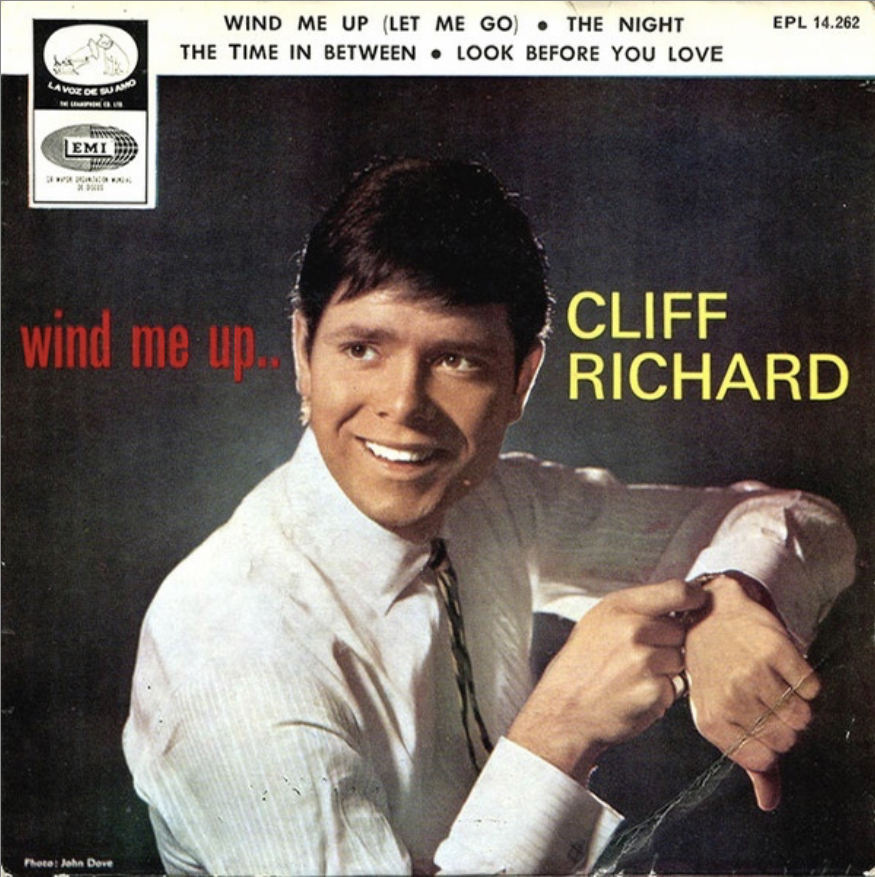
This song came to Cliff Richard (India 1940) while well established, having already scored no fewer than 28 top 10 records (eight No.1’s) either as himself or with The Shadows. This was recorded in Nashville, Tennessee and these sessions also yielded the No.1 ‘The Minute You’re Gone’. It was released in October 1965 and peaked at No.2 where it stayed for three weeks in December and into January 66. It was described as a ‘slow country and western waltz’ and only kept of the top by the Beatles’ Day Tripper / We Can Work It Out.
Number 89 to follow…
